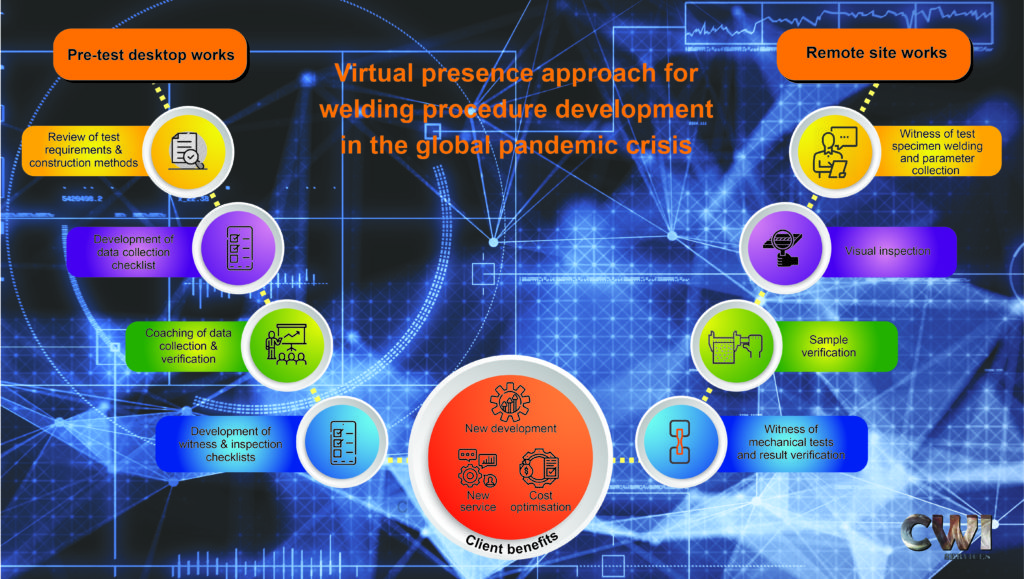Background
The unprecedented Covid-19 pandemic crisis has brought remarkable unfavourable impacts to construction projects in the globe. Unfavourable impacts were caused by the closure of international borders and travel restriction policies, which subsequently brought unproductive effects to personnel mobilisation and logistic arrangements for materials and equipment. Consequently, delay the project execution and progress.
CWI was engaged by a hydropower plant construction company in Papua New Guinea (PNG) to develop welding procedures for high strength steel welding for a surge tank. However, the welding procedure execution activities was held due to travel restriction. In order to avoid further delay of welding procedure development activity, CWI took initiatives by applying video conferencing technology to remotely support the welding procedure development activity.
With the combination of video conferencing tools and enrich knowledge and experience of the welding engineer of CWI, the welding procedure development service was delivered in a virtual presence environment to complete the qualification test programme in China. The adoption of video conferencing technology to perform welding procedure development activity was first of its kind for this extensive human interaction service activity.
Pre-test desktop work
Absence of welding engineer at the welding and testing sites has added additional challenges to the execution of test activities due to absence of face-to-face human interaction and limited understanding of the site and equipment conditions. However, the welding engineer of CWI took an initiative to walk extra miles by performing extensive planning, preparation and coordination activities in the pre-test desktop work stage to minimise the impact which could be brought by the challenges mentioned above.
1) Review of requirements and construction method.
2) Development of data collection checklist.
3) Coaching of execution of data collection and verification.
4) Development of witness and inspection checklist.
Remote site work
When the welding procedure development programme progressed into the execution phase, witnessing and verification activities were carried out remotely by the welding engineer. The remote witnessing and verification activities were carried out to ensure test specimens were welded and tested in accordance with test requirements as well as to ensure the information of critical and non-verifiable activities were captured and verified.
1) Remote witness of test specimen welding and parameter collection.
2) Remote visual inspection.
3) Remote sample verification.
4) Remote witness of mechanical test and visual inspection of tested sample.
Future opportunities and client benefits
1. New service delivery solution:
The experience gained through this new method of performing welding procedure development activities has made CWI proficient to offer welding and welder qualification test services to its clients by virtual presence approach.
2. Acceleration of virtual presence approach development:
The success application of virtual presence method and the experience gained are an impactful encouragement for CWI to accelerate the application and extend virtual presence approach to other service areas in order to continue the delivery of quality services and help its clients to minimise their business impact in this unpredictable public health crisis.
3. Cost optimisation benefits to client:
The virtual presence methodology also brought cost optimisation benefits to its clients by saving the travelling and accommodation costs for welding engineer to present at the testing venues but enjoying the same international level of quality service.
4. Learning opportunity to clients:
The experience, knowledge and skill applied in resolving challenges and technical issues during the service duration bring invaluable learning benefits to clients.
